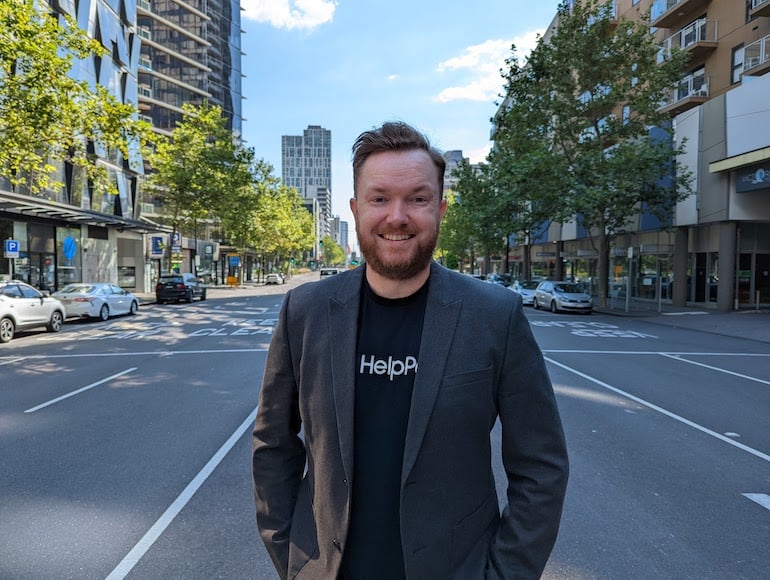With no end in sight to the freeze in venture capital funding markets and darkening economic clouds, startups have been doing everything they can to prioritise their people, hone their business models and lengthen their runways. I’ve been heartened by the determination of our community.
For those considering an equity crowdfunding raise, there are five steps you can start putting in place now to make sure you can handle the rigours of such a campaign, while keeping your business alive for the other side.
According to Birchal, startups embraced equity crowdfunding in record numbers in 2022 as VC funding markets tightened. It’s just common sense that more startups will go down this path for the foreseeable future as the world decouples from historically cheap money.
HelpPay completed a pre-Seed round back in October 2021 and we’ve been active in the market since March last year. We launched our equity crowdfunding campaign with market leader Birchal this week. It made sense for us because a) as a social fintech, the crowdfunding model fits our own business model and b) like many startups out there, we’re in an interesting middle ground of appeal to VCs.
We’ve been feeling a little bit like a theatre production. Until it’s showtime, you haven’t actually achieved anything. But having been through the process with Birchal, we’re excited to share our learnings with fellow startup founders.
There are five rules.
1. First plan early. In our experience, a successful equity crowdfunding campaign requires at least six months of planning, from building your pitch deck to lining up your investors.
Start early to give yourself enough time to develop your strategy and execute it effectively. The general advice is that you will need to budget for about 10% of the amount you want to raise, on marketing – so ensure you have funding set aside early.
2. Second, be prepared to balance the demands of the campaign with the running of your business.
Equity crowdfunding is an incredibly time-consuming process. It’s challenging and rewarding work un, but it certainly looks much easier from the outside than it is in practise. It’s essential to have a team in place that can manage both the day-to-day operations of your business and the demands of the campaign.
You and your team need to trust each other completely as you will inevitably divide and conquer some tasks and come together closely on others.
3. Third, check in frequently with your equity crowdfunding provider, in our case – Birchal.
They will be your partner throughout the process, and it’s crucial to maintain open communication and work collaboratively or else units of work are likely to go off track or you’ll waste time trying to solve a problem by yourself.
Ask what the metrics are that you need to hit after the campaign goes live to ensure you’re focused not just on getting live but making sure the campaign is a success.
4. Fourth, make sure you’ve surrounded yourself with people you trust and who can work under pressure.
While all startup founders aim to hire excellent performers from the beginning, ensuring you have the right team becomes essential during a crowdsource raise.
You need external accountants, lawyers, videographers, graphic designers, copywriters and internal marketing automation. It’s a critical time for the company to execute on its strategic goals in a timely manner and you simply will not have the bandwidth to nurse someone through.
5. Finally, crowdsource fundraising needs a crowd, so have a robust database to market to.
Your campaign depends on having a large and engaged audience. While crowdfunding platforms bring their database to the campaign there is no one that cares more about your business than your users, people who know your founders, your existing investors and other databases you may have built over time.
Build your database early, and invest time and resources into developing relationships with potential investors and then build those relationships in the lead up to and throughout the campaign.
Making the biggest noise you can to people who care about your business, and asking for favours, and leveraging networks is essential to a successful raise.
Balancing these five elements is an ongoing process. There are going to be weeks where you get one right, but not the others, and vice versa. That’s okay.
But a sustainable balancing of all five elements will ensure you get the two major tasks done – the crowdfunding campaign up and running, and your business functioning effectively. If you can’t keep the five elements together, you’ll likely botch the campaign, the business, or both.
This is a critical time for our industry. It takes anywhere from 3-10 years for many startup business models to flourish into profit-making businesses. When these business plans were written interest rates were low and valuation growth was almost guaranteed. That is not the case now and is unlikely to be so for the foreseeable future.
I have a great deal of empathy for fellow founders that are having major worries about the longevity of their business models. But we need to lift our eyes and remember that there is technology to assist us as much as our customers.
- Rowan Wilde is Co-Founder of social fintech HelpPay. His Birchal CSF campaign is now underway here.




















Trending
Daily startup news and insights, delivered to your inbox.